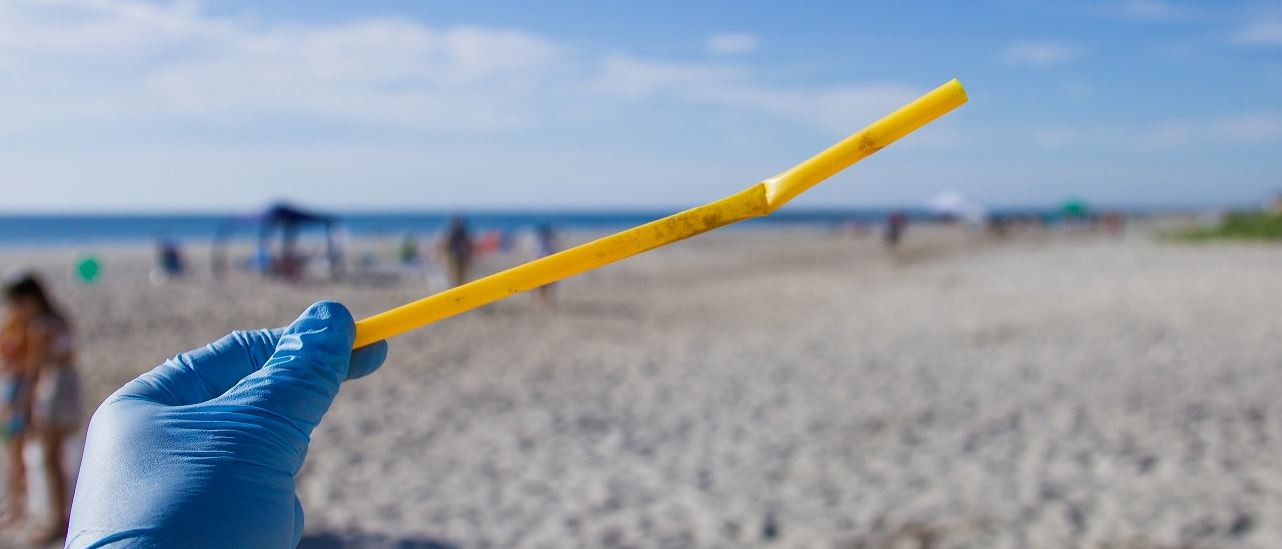The tide is now turning against plastic. After high-profile campaigns around ocean litter and carbon emissions, public opinion is changing – and business activities along with it. According to one poll, half of UK consumers said they would be willing to pay more to avoid plastic packaging. Nearly two thirds of small businesses, meanwhile, now have strategies in place to reduce the amount of plastic they use.
At the centre of these changes are plastic straws. According to one 2017 study, Europeans use 36 billion plastic straws a year. However, thanks to the EU’s directive against single-use plastic, disposable plastic straws, stirrers, and cotton buds, among other disposable products, will be outlawed across the bloc from 2021. With authorities worldwide following suit, businesses – and consumers – will need to adapt.
Luckily, many brands are offering sustainable alternatives to plastic straws – alternatives that are both compliant with the new laws and acceptable to a public ever more sensitive to environmental concerns. In this article, we’re taking a look at some of the options available. From reusable metal straws to straws actually made of straw, here are eight plastic straw alternatives.
Sustainable Alternatives to Plastic Straws
For a humble drinking tool, straws are hugely diverse – with high-end designer items noticeable among more affordable bulk options. Despite their variety, though, not every straw is suitable for every user, and not all reach the same standards of sustainability.
Here, we’re focusing on the reusable alternatives to disposable plastic straws as well as the more sustainable disposable options too. Let’s take a look.
Reusable Plastic Straw Alternatives
We’ll start with reusable straws. Easily cleaned and usually sold individually, these were once designed largely with the individual consumer in mind. However, businesses have been showing an increasing interest, and, since 2014, the reusable straw market has grown by 12% annually. That’s before states had started clamping down on their single-use plastic alternatives.
You’ll find reusable straws in a standard range of materials – with metal, glass, silicone, and bamboo the most popular options.
Metal Straws
Metal straws are one of the most common reusable products. They tend to be made from stainless steel – or, in some cases, copper – and, as such, are easily cleaned, reusable, and non-toxic. While many voices have expressed concern over the possible taste of metal in their drink, this isn’t a problem in reality. In the majority of cases, the straws are treated to avoid this.
An important feature of metal straws to be aware of is their rigidness. This means that they will not flex in the way that might be expected from straws. As a result, they can be dangerous. In the US, for example, they are not deemed suitable for children, while advocacy groups for people with disabilities have also identified usability issues with these products.
To attend to this problem, brands have produced metal straws with rounded edges, for example, so they are not too pointy. However, design issues – including the fact that they can get hot and cold – have proven enduringly off-putting for some users.
Glass Straws
Glass straws enjoy similar physical properties to metal. They are rigid, non-toxic, and dishwasher-safe. While this means they are convenient to clean, store, and use, it does make them vulnerable to some of the same complaints as metal straws.
One unique feature, though, is that they are translucent, allowing users to see whether they are clean inside. Often sold with a cleaning brush too, this can be helpful for commercial and non-commercial users alike. However, the brushes may be a little fiddly for a high-paced bar or restaurant environment.
Ensure that any straws you buy are made of borosilicate, a hardier type of glass that does not shatter. Drop it, though, and it may chip and could need to be replaced in the long run. As a result, they are not always infinitely reusable – although glass can be widely recycled.
Silicone Straws
Silicone is a material very similar to plastic, but with a more durable and rubber-like texture. This makes its straws much more child-friendly than their reusable but rigid alternatives. A great option, then, if you want a straw that can be used by all.
However, the material is non-biodegradable, not yet widely recycled, and virtually indestructible. Once your straws have reached the end of their usable life, then, they will likely go to landfill – and will stay there as long as any single-use plastics.
As such, these straws won’t solve the problem of plastic pollution. Yet, they may still contribute to the fight against climate change. One recent study, for example, showed that the carbon benefits of a switch to silicone dramatically outweigh the material’s potential harm.
Bamboo Straws
The last of our reusable straws is truly ecological. This is the bamboo straw – an alternative to plastic straws that’s manufactured directly from the plant. In most cases, the material is sustainably and ethically sourced, and, being organic, it will biodegrade completely once disposed of. And this is not something you can say of its metal, silicone, or glass alternatives.
A possible downside is the user experience: the bamboo can affect the taste of the drink. Meanwhile, as the straws are made from the stems of the bamboo plant itself, their diameter is variable. If you are a business looking for uniformity, then, these plastic straw alternatives might not be the option for you.
Eco-Friendly Single-Use Straws
Despite the benefits of reusable straws, businesses may still prefer single-use products, particularly in the age of Covid-19. Fortunately, there are many available that avoid plastic – and that help you avoid contributing to the 8 billion plastic straws littering the world’s beaches.
Here are some of the alternatives to plastic straws that are both sustainable and disposable.
Biodegradable Plastic Straws
Plastics hold a greater diversity of materials than we realise – and not all conform to our expectations. One of the most surprising of these are what are known as “biodegradable plastics,” or bioplastics. Made from polylactic acid, or PLA – a plastic produced from materials like corn starch, sugar cane, or cellulose – bioplastics are carbon neutral and significantly more sustainable than conventional oil-based plastics.
They have the benefit, though, of behaving just like plastic. They are flexible, water resistant, and non-toxic, giving the familiar experience we expect from straws.
More sustainable does not mean harmless, however. Experts have recently questioned whether they can in fact be classed as biodegradable. For the material to break down properly, specific technologies, such as industrial composters, may be needed – and these aren’t really so widely available.
Edible Straws
More of a novelty item than a dependable plastic straw alternative, edible straws are the epitome of single use. Once users have finished their drink, the straws can be eaten – making them effectively waste-free.
Edible straws come in a range of flavours – from chocolate to lemon and lime – and they tend to be made from a mixture of sugar and cornstarch. Due to the specific ingredients used by different brands, however, they may not be suitable for vegetarians and vegans. And other users may just prefer the flavour of the drink – rather than that of the straw.
While designed for a commercial setting – and individually wrapped as a result – they are quite expensive relative to other options. They also only last about 30 minutes in liquid before disintegrating.
Straws of Straw
Before the invention of the paper drinking straw in the 1880s, it was common for people to drink through dried tubes of rye grass. It’s this material – straw – from which our drinking tubes borrowed their name.
With the recent move away from plastic, these straws made of straw have made a comeback – although to better specifications. They no longer break down in your drink, for example, like their nineteenth-century ancestors would. Rather, modern straw straws are manufactured to be robust, non-soggy, and suitable for hot drinks too – all while being biodegradable.
Like their reusable bamboo relatives, though, uniformity cannot be guaranteed.
Paper Straws from Tembo Paper
A final option for businesses and consumers alike is the paper straw. They are affordable, biodegradable, and have the same qualities as familiar plastic straws. That means they are tasteless and odourless – and they stay waterproof long enough that you can finish your drink.
Paper straws are the truly sustainable alternative to plastic straws, while offering the convenience of single-use. They don’t need to be washed or disinfected, unlike their reusable alternatives, and there should be no guilt in throwing them away. They only take about two months to biodegrade – without the need for any specific technology. And, as they are organic material, they are carbon-neutral, too.
Admittedly, though, not all paper straws work. Poorly-manufactured ones can become soggy and can affect the taste of your drink – or they are just too large to be pleasant. However, at Tembo Paper, our specific technology enables us to achieve a much smaller diameter, without the help of excess glue.
This means that we can give users the smooth experience they would expect from a straw, while keeping them free of any harmful chemicals.
Photo by Brian Yurasits on Unsplash


